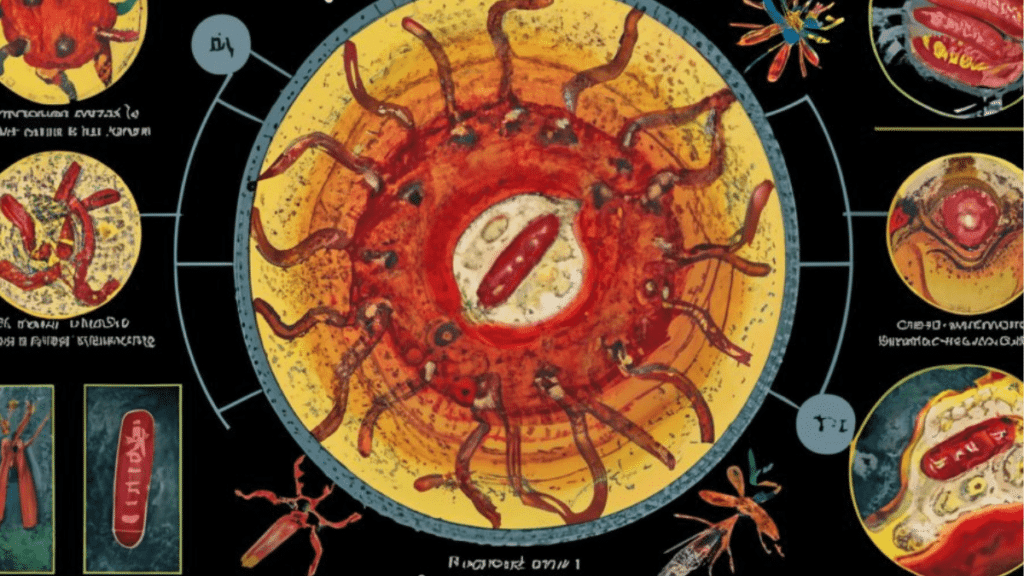Black fever, also known as visceral leishmaniasis or kala-azar, is a severe parasitic disease caused by protozoan parasites of the genus Leishmania. This disease is transmitted through the bites of infected female sandflies. Black fever predominantly affects people in tropical and subtropical regions, and if left untreated, it can be fatal. Here’s a detailed look at the causes, symptoms, diagnosis, precautions, and treatment of black fever.
Table of Contents
Causes of Black Fever
It is caused by Leishmania parasites, primarily Leishmania donovani and Leishmania infantum. The transmission occurs through:
- Sandfly Bites: The primary vector for transmitting the Leishmania parasite is the female sandfly. The parasite enters the human body when the sandfly bites and feeds on blood.
- Contaminated Blood Transfusions: Although rare, transmission can occur through blood transfusions from an infected donor.
- Congenital Transmission: In some cases, an infected mother can pass the infection to her unborn child.
Symptoms
The symptoms of fever can take weeks to months to appear after being bitten by an infected sandfly. They include:
- Fever: Persistent high fever, often with peaks and troughs.
- Weight Loss: Significant loss of weight and muscle mass.
- Fatigue: Severe tiredness and weakness.
- Enlarged Spleen and Liver: Swelling of the spleen (splenomegaly) and liver (hepatomegaly).
- Anemia: Low red blood cell count leading to pallor and weakness.
- Darkening of Skin: Patchy darkening of the skin, which is why the disease is also called “black fever”.
- Abdominal Pain: Pain and swelling in the abdomen due to enlarged organs.
- Bleeding: Bleeding gums, nosebleeds, and bruising due to low platelet count.
Diagnosis of Black Fever
Diagnosing involves a combination of clinical evaluation and laboratory tests:
- Clinical Evaluation: Based on the symptoms, patient history, and examination of the spleen and liver size.
- Laboratory Tests:
- Blood Tests: Checking for anemia, leukopenia, and thrombocytopenia.
- Serological Tests: Detecting antibodies against Leishmania parasites (e.g., rK39 dipstick test).
- Bone Marrow, Spleen, or Lymph Node Biopsy: Microscopic examination of tissue samples to identify Leishmania parasites.
- PCR (Polymerase Chain Reaction): Detecting Leishmania DNA in blood or tissue samples for a more precise diagnosis.
Precautions Against Black Fever
Preventing focuses on reducing sandfly exposure and controlling the sandfly population:
- Insect Repellents: Use repellents containing DEET, picaridin, or permethrin on exposed skin and clothing.
- Protective Clothing: Wear long-sleeved shirts, long pants, and socks to minimize skin exposure.
- Insecticide-Treated Bed Nets: Sleeping under bed nets treated with insecticides can reduce the risk of sandfly bites.
- Environmental Management: Reduce sandfly breeding sites by keeping living areas clean and free from organic waste.
- Vector Control Programs: Participate in community efforts to control sandfly populations through insecticide spraying and other measures.
Treatment for Black Fever
Treatment of fever involves antiparasitic medications and supportive care:
- Antiparasitic Medications:
- Pentavalent Antimonials (e.g., Sodium Stibogluconate): Traditional first-line treatment.
- Liposomal Amphotericin B: Effective and less toxic option, especially for severe cases.
- Miltefosine: An oral medication used for treating black fever.
- Paromomycin: An alternative treatment, often used in combination with other drugs.
- Supportive Care:
- Nutritional Support: Ensuring adequate nutrition to help the body recover.
- Blood Transfusions: In cases of severe anemia.
- Management of Secondary Infections: Treating any secondary bacterial or viral infections.
Black fever is a life-threatening disease that requires prompt diagnosis and treatment. By understanding its causes, recognizing the symptoms, taking preventive measures, and seeking appropriate medical care, we can effectively manage and reduce the impact of this disease. Public health efforts and community awareness play crucial roles in preventing the spread of black fever and protecting vulnerable populations. Stay informed, take precautions, and seek medical advice if you suspect you have been exposed to the disease.

